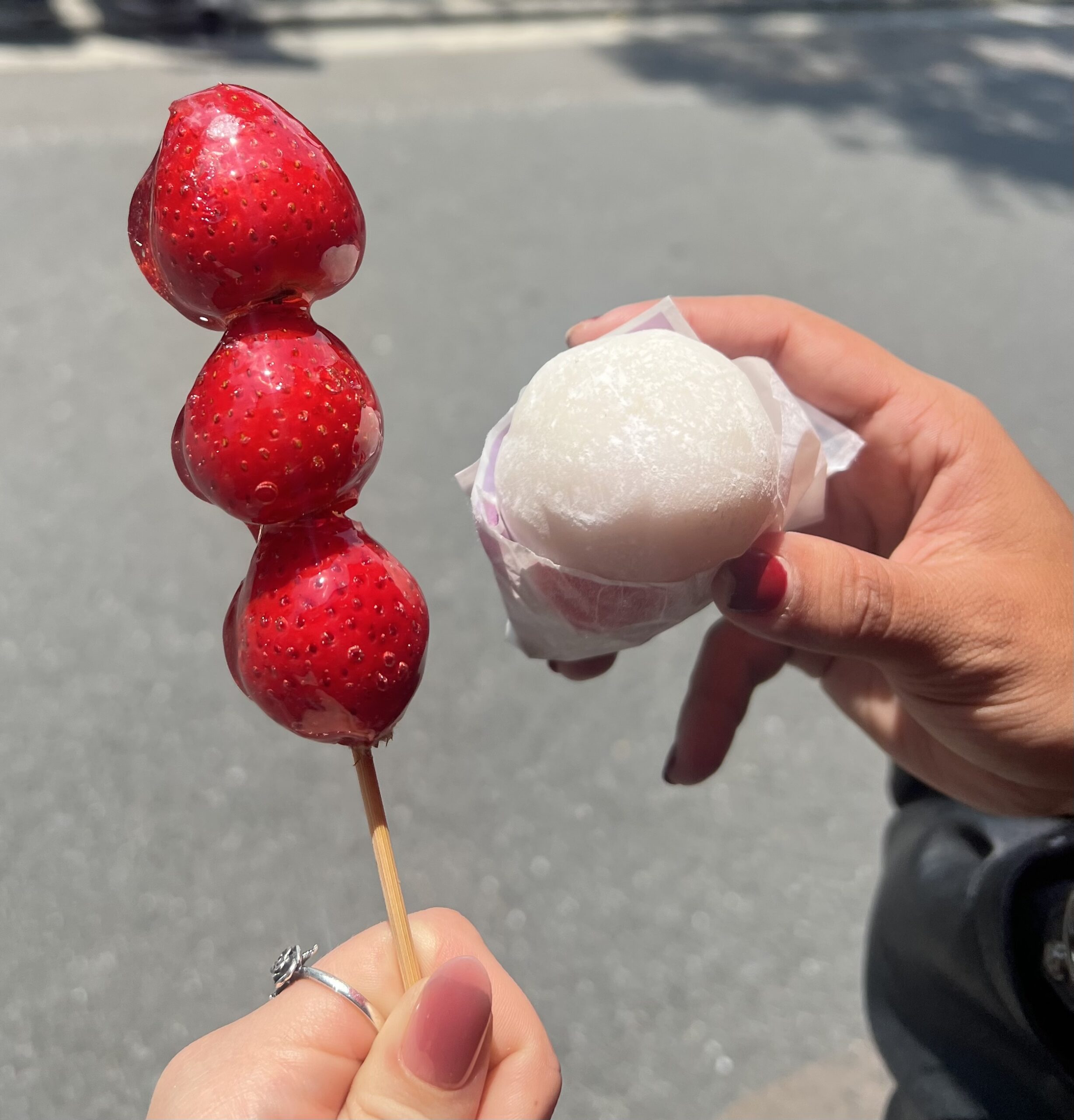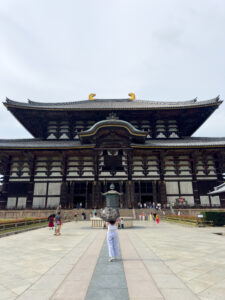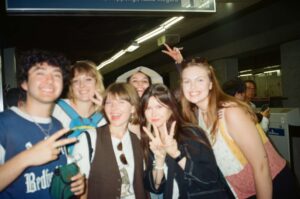
The many bustling markets of Kyoto are known for attracting both locals and travelers alike. The crowded street food scene of numerous small vendors freshly preparing anything from seafood to sweets allows visitors to experience century old dishes and the very soul of the city.
Three of these major markets are located just outside Kiyomizu-dera Temple and Fushimi Inari Shrine and in Nishiki Market.
In an immense shopping center just outside of Kiyomizu-dera Temple, food stalls line the walkways for those visiting the temple to recharge their energy after the winding journey up and down the side of the mountain where it resides. Here is where your time at the temple can be ended with kakigōri, Japanese shaved ice. Sweetened condensed milk is what makes this ice so sweet and since the ice is shaved so finely, it feels especially soft when eaten.
In the area surrounding the temple is where the numerous food vendors captivate visitors’ eyes with their displays of extremely colorful food samples that attract anybody who is a fan of street food.
Without walking for long, it’s easy to come across pickled cucumbers on a stick, for example. They’re not quite like an ordinary pickle because they spend less time marinating in vinegar and salt. This allows them to have a crunchy feel while still tasting fresh and not overpowering, making them a popular snack in Japan.
Further down into this market is where many sweets shops are located. For instance, there are vendors offering strawberry mochi and candied strawberry as well as frozen yogurt with unique flavors such as peach and strawberry that taste unlike any other.
Another area booming with street vendors in Kyoto is the area around Fushimi Inari Shrine. A common trend at some of Kyoto’s famous shrines is to have a variety of food options just outside to sell to the shrine’s visitors. On the way up to the first torii gate, visitors walk through a long street of food stalls with more savory options like crab legs on a stick that can be topped with mayo and seasoning which is a first-time try for many tourists in Japan.
Another stand here sells stir fried noodles in a generous portion size that come loaded with vegetables and flavor. One more Japan exclusive street food is takoyaki, a wheat flour-based batter cooked with diced octopus in a special round pan that gives it a spherical shape. This dish has an intense savory flavor that warms the body up as it’s served fresh off of the grill.
Of course, Fushimi Inari has sweet options as well. Fresh oranges can be found being cut into and blended inside to make a sweet juice inside its shell, perfect as a refreshing beverage to get customers through a hot summer day or as a dessert to end a day of eating fried and grilled street foods.
The biggest and most well-known of these markets in Kyoto, without a doubt, is Nishiki Market. It is the only one that is not found outside of a shrine, but in the middle of downtown Kyoto, located on the east end of Nishikikōji Street.
Known as Kyoto’s Kitchen, this has been a hub of delicious street food for over four centuries. The first thing to notice here is the scent of fresh seafood. Nishiki Market is renowned for its array of sashimi, sushi and seafood skewers. But If you’re not a seafood fan, then another option here is yakitori, chicken skewers glazed with savory sauce that are equally as tasty.
A gyoza stand at the end of the market even has tables for its customers to be able to easily enjoy the dumpling known for its thin wrapper filled with ground meat and vegetables.
Just like the rest though, Nishiki Market also thrives in its options of traditional sweets. Try mochi, chewy rice cakes filled with sweet red bean paste or fruit, or sample dorayaki, fluffy pancakes sandwiching sweet azuki bean paste.
Nishiki Market is a product of Kyoto’s history and culture and each moment is an opportunity to immerse yourself in the flavors that have shaped Kyoto’s cultural identity.
Beyond its culinary delights, Kyoto’s street food offers a glimpse into Japanese culture and tradition. Each dish is a reflection of century old recipes passed down through generations, proving Kyoto’s role as Japan’s cultural heart.
Whether you’re sampling yakitori in Nishiki Market or having kakigōri near Kiyomizu-dera Temple, every bite tells its own unique story.
In Kyoto, street food isn’t just food, it’s an outlet to connect with a city that cherishes its rich culinary past.







